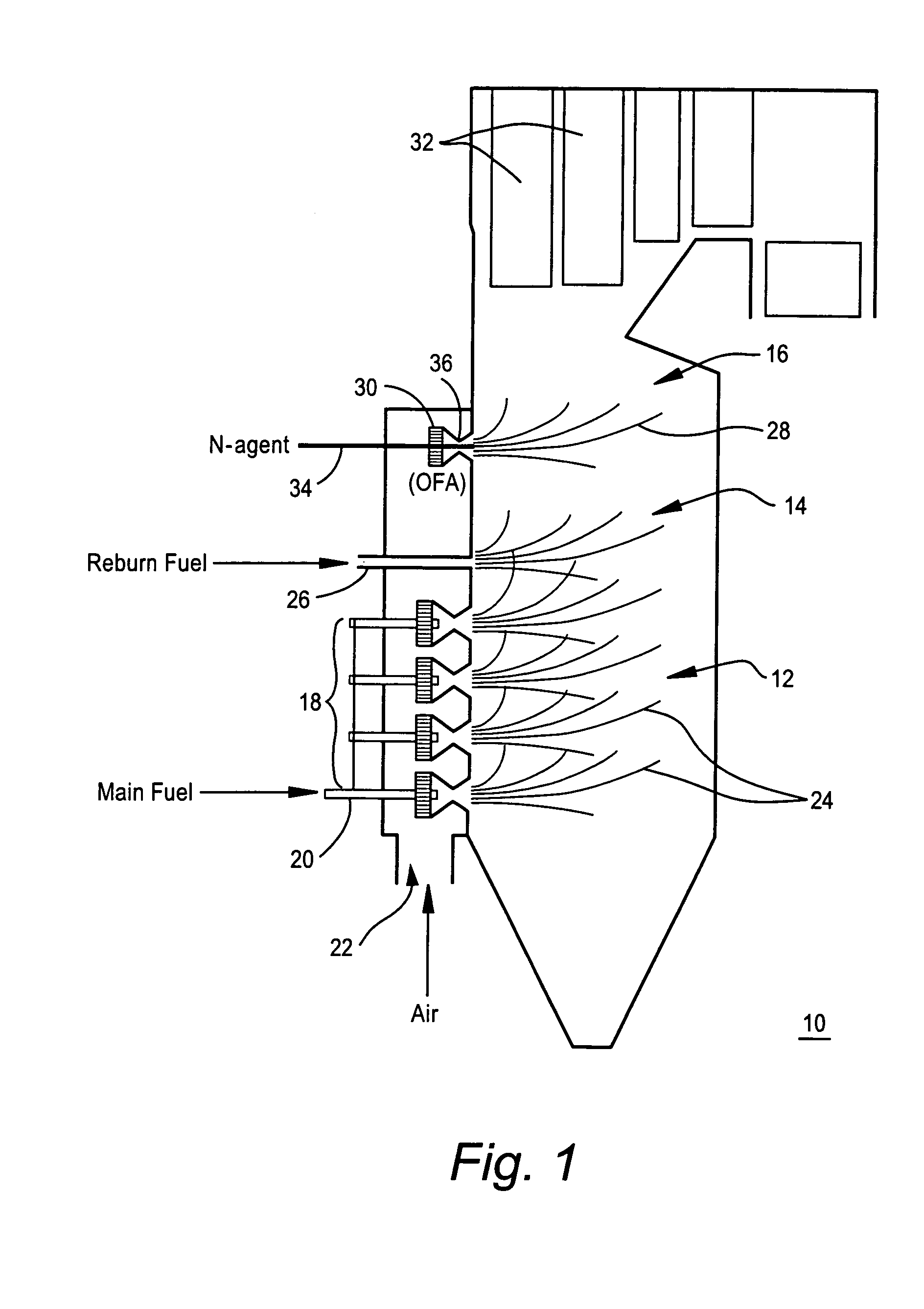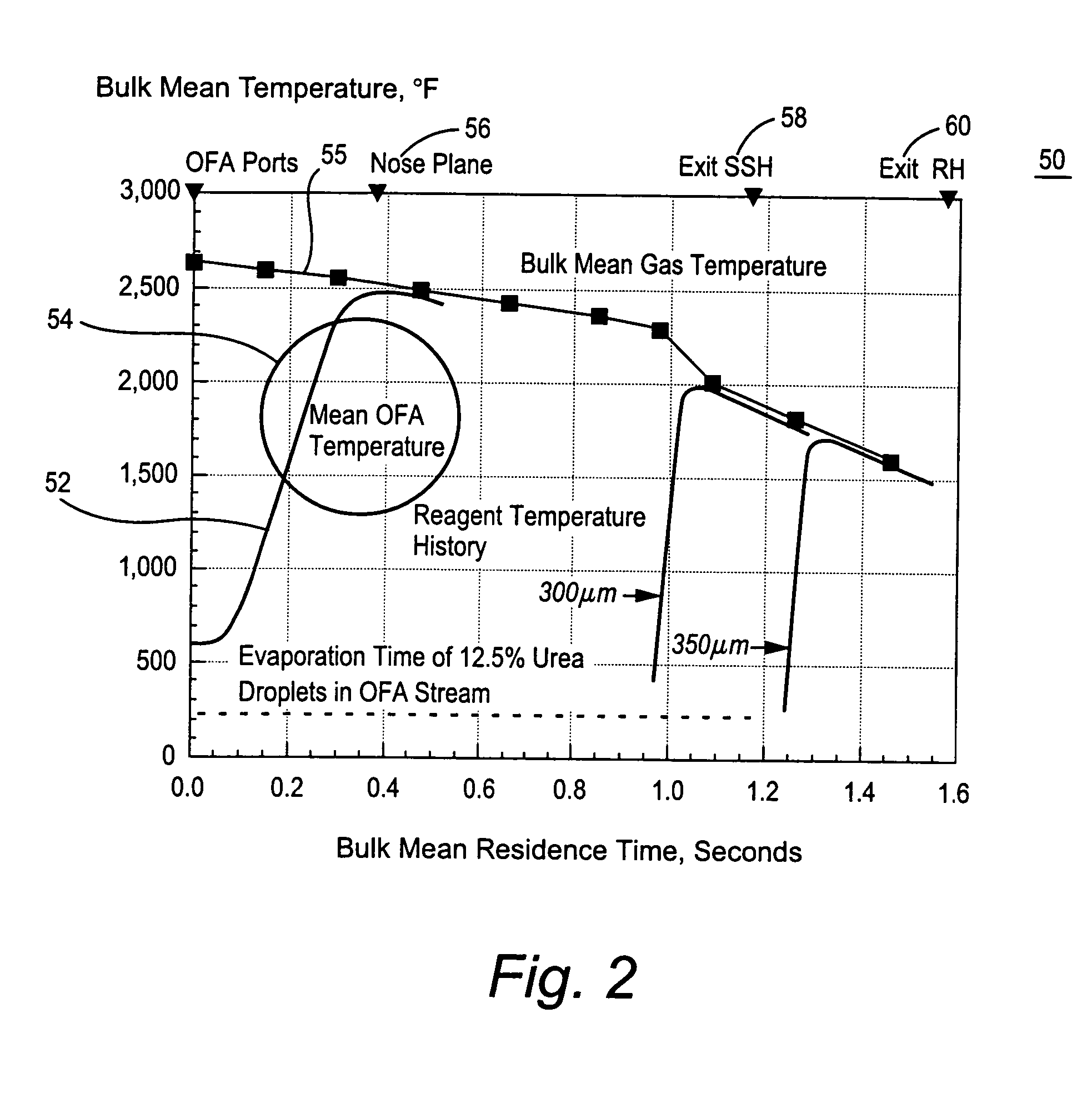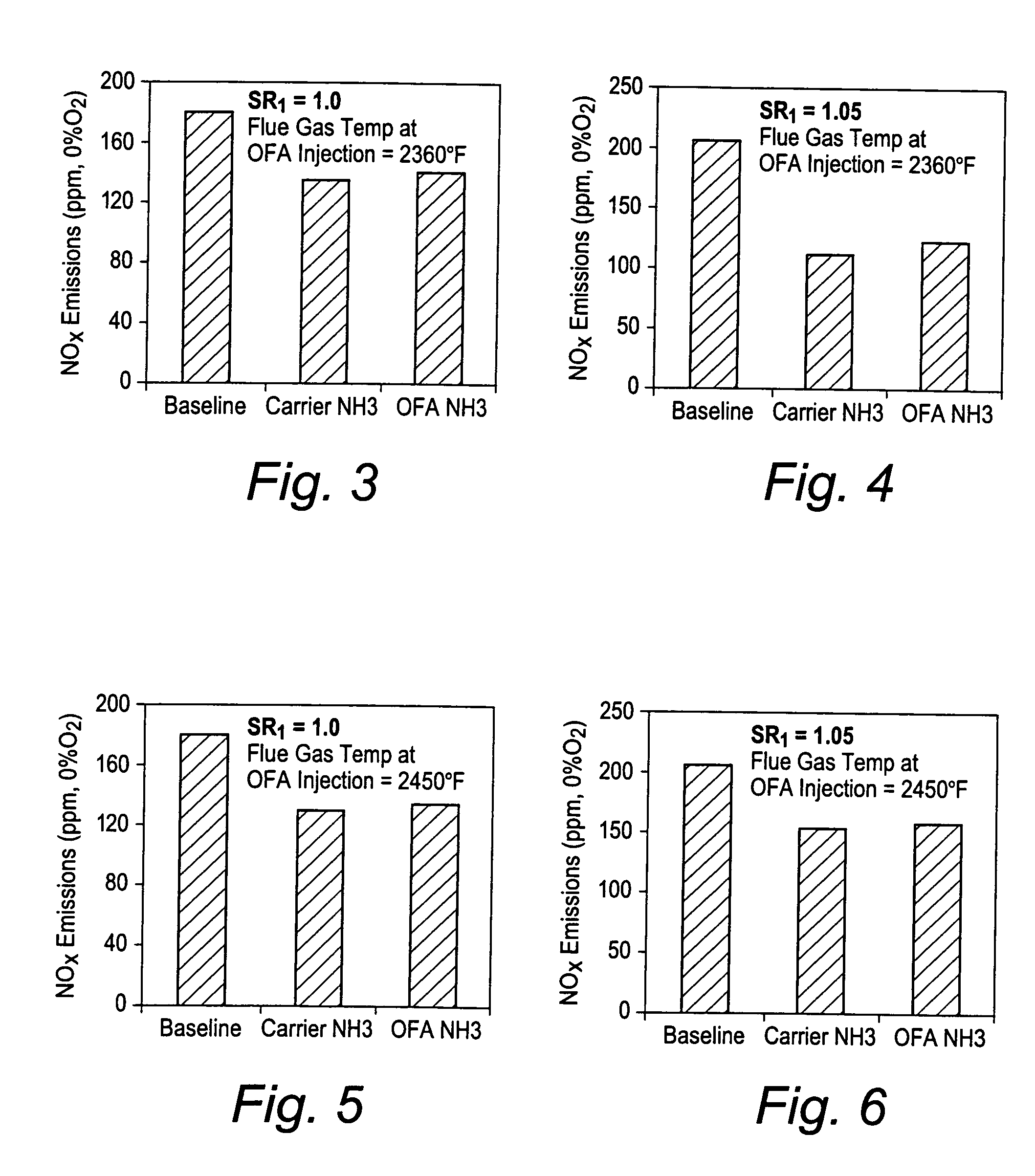Method to reduce flue gas NOx
a flue gas and nox technology, applied in the field of nox reduction, can solve the problems of ammonia slip, nitrogen oxide (nox) is the subject of growing concern, etc., and achieve the effects of reducing the concentration of nitrogen oxides, minimizing ammonia slip, and small average siz
- Summary
- Abstract
- Description
- Claims
- Application Information
AI Technical Summary
Benefits of technology
Problems solved by technology
Method used
Image
Examples
Embodiment Construction
[0014]A gaseous or small droplet (less than 50 micron in diameter) nitrogen bearing reagent (a “nitrogen agent”) is introduced with staged combustion air, e.g., OFA air, downstream of the primary combustion zone to reduce NOx in the flue gas of a boiler. In staged combustion, a portion of the air required to complete combustion (overfire air) is injected downstream of the primary combustion process, such as where the flue gas products of primary combustion have cooled to approximately 2400° F. to 2600° F. The nitrogen agent in gaseous form or small droplets (<50 about microns) in an aqueous solution is introduced together with the staged air into the extremely hot flue gas. The staged combustion air and nitrogen agent are rapidly heated to the flue gas temperature of above 2000° F.
[0015]A surprising discovery has been made that NOx reduction can be achieved with SNCR by a release of a gaseous or small droplet nitrogen agent into an area at or near the OFA injector, where the bulk fl...
PUM
 Login to View More
Login to View More Abstract
Description
Claims
Application Information
 Login to View More
Login to View More - R&D
- Intellectual Property
- Life Sciences
- Materials
- Tech Scout
- Unparalleled Data Quality
- Higher Quality Content
- 60% Fewer Hallucinations
Browse by: Latest US Patents, China's latest patents, Technical Efficacy Thesaurus, Application Domain, Technology Topic, Popular Technical Reports.
© 2025 PatSnap. All rights reserved.Legal|Privacy policy|Modern Slavery Act Transparency Statement|Sitemap|About US| Contact US: help@patsnap.com



